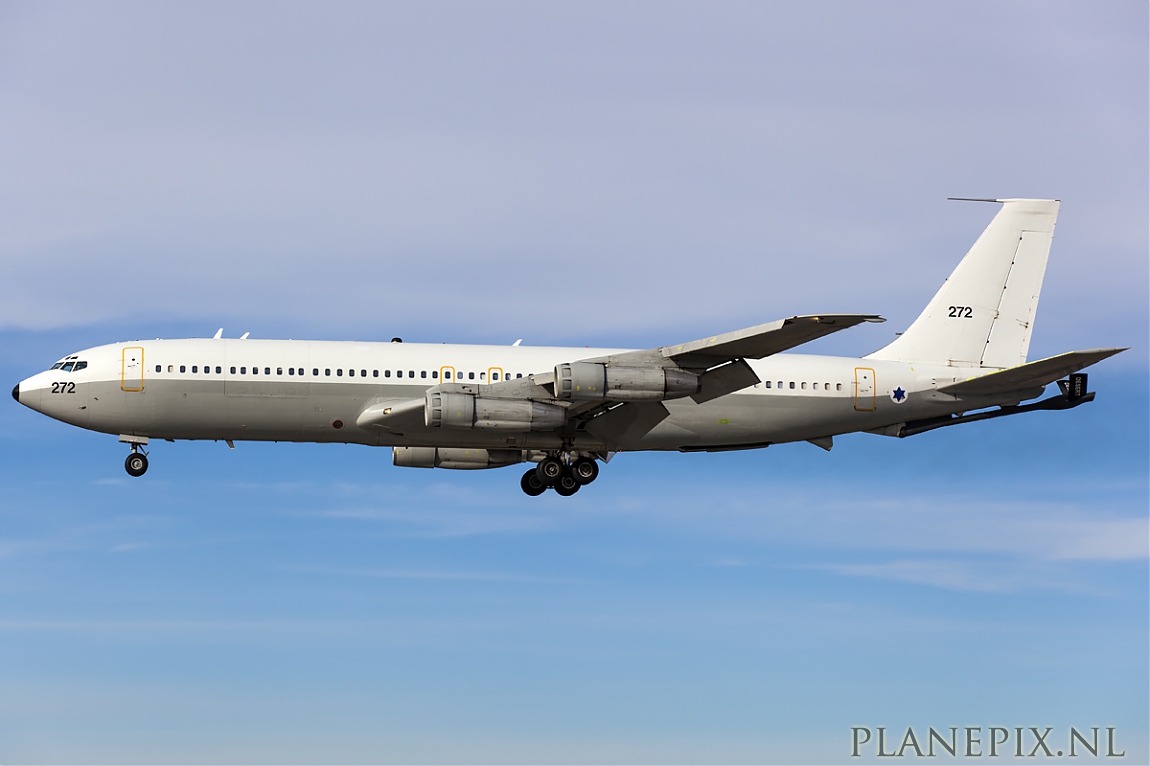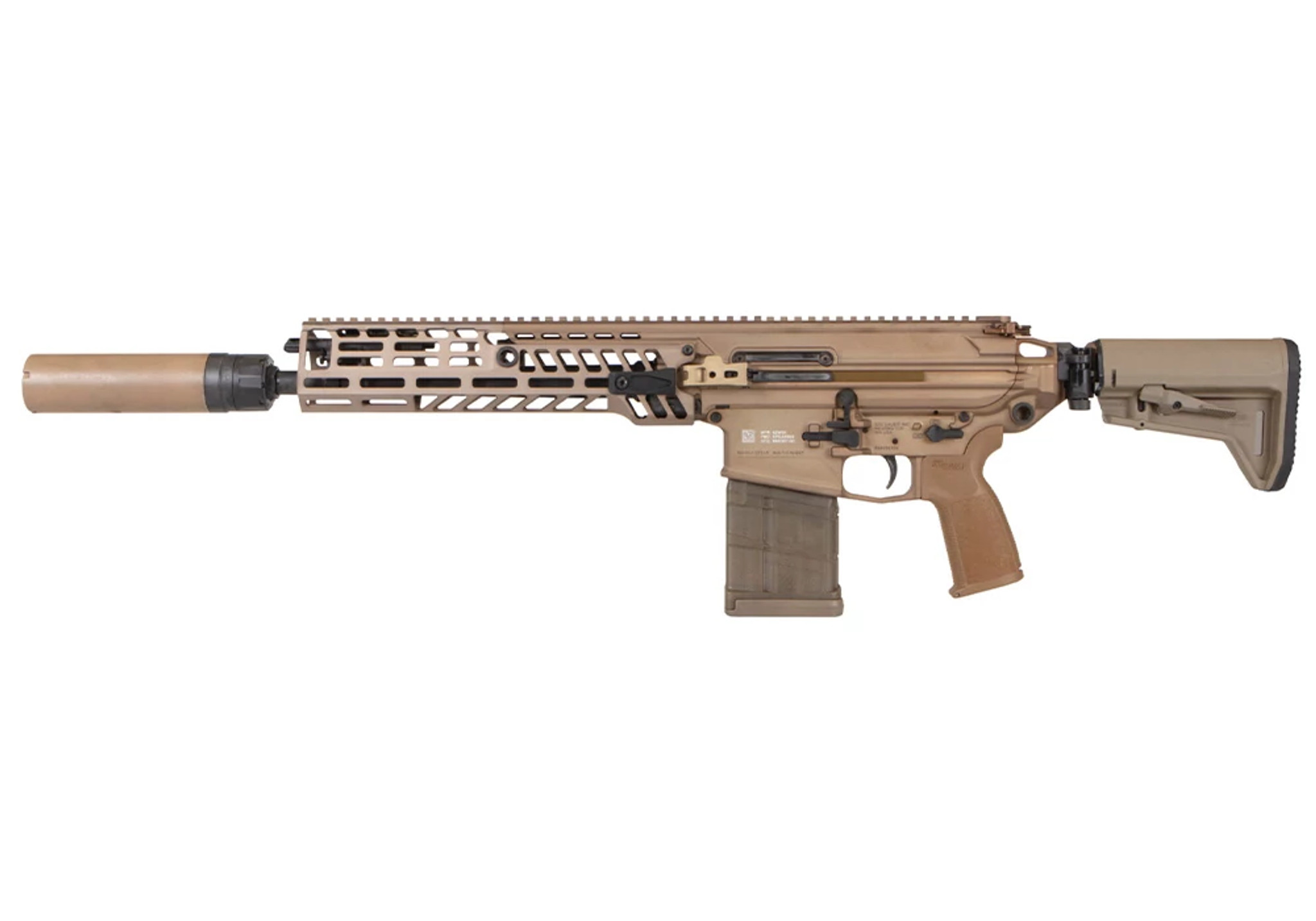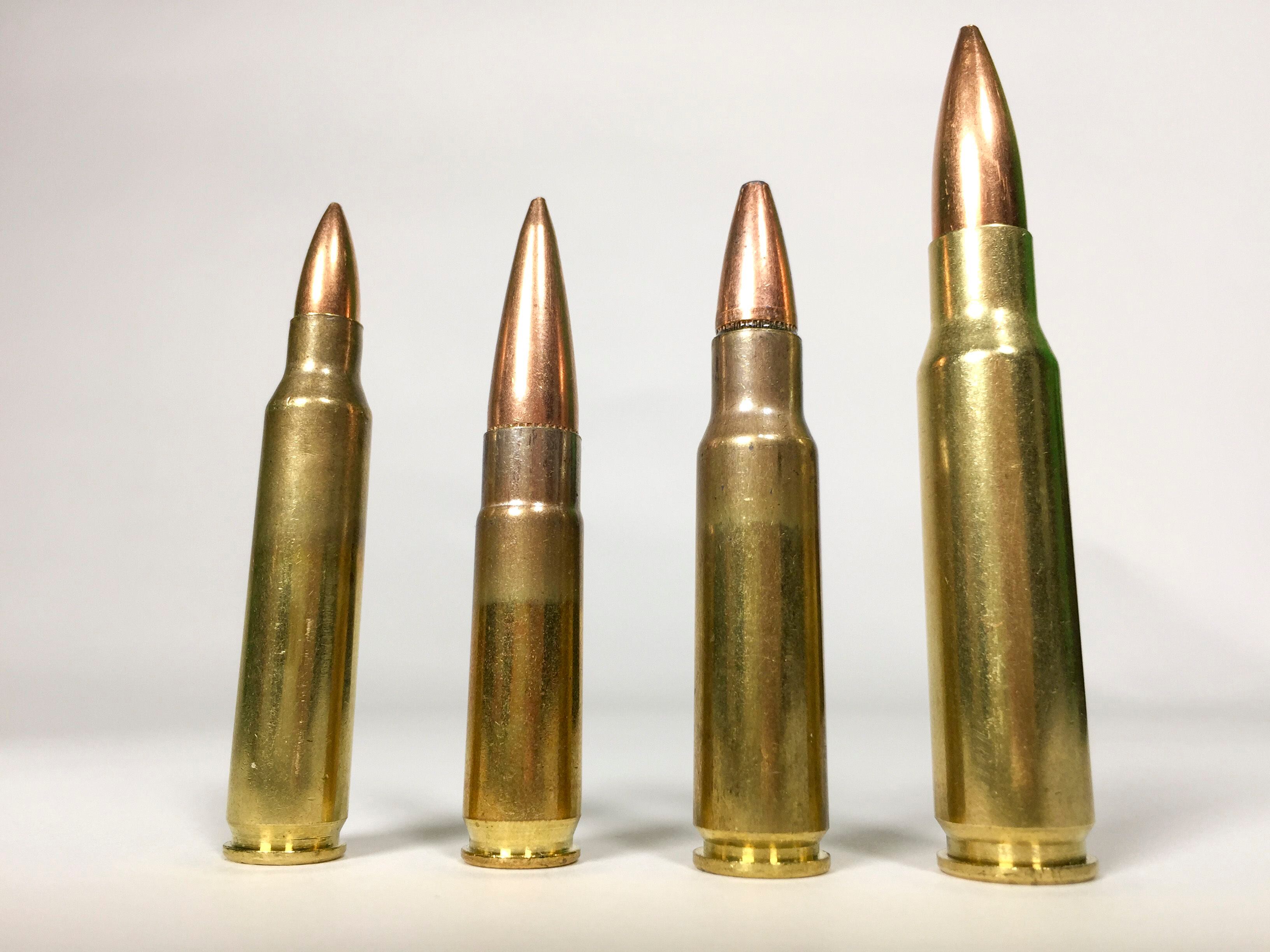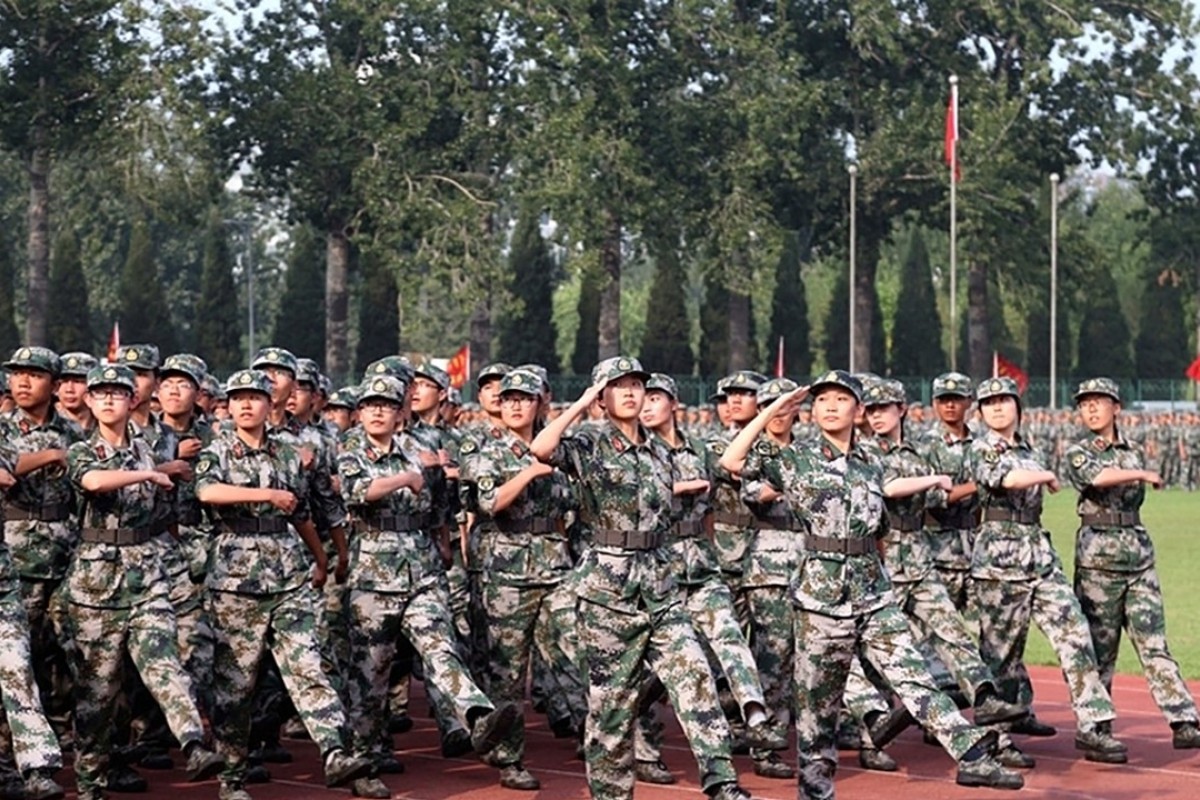707 Military - 58-6972 has Boeing design number 17927. Delivered to Air Force Jun 30, 1959. The VC-137B was redesigned in May 1963 when it was retrofitted with JT3D jet engines. It was scrapped in 1996 due to severe corrosion.
Programmable signal processors have been replaced and high capacity switch and fiber optic cable will replace the copper wire workstation network. The first refurbished aircraft under the Computer Replacement Plan (CRP) was delivered in February 2002 and the program was completed in August 2005.
707 Military
 Source: aviation-spotting.com
Source: aviation-spotting.com
VC-137C, 72-7000 approached Phoenix Sky Harbor on May 10, 1974 for a visit by Richard Nixon. It is one of two 707-353Bs used by the Air Force to transport the President. It has the Boeing design number 20630 and was delivered to the Air Force on August 9, 1972.
Jstars – Joint Surveillance And Target Attack Radar System
On October 13, 1955, the airline industry learned that Pan American World Airways had placed the first order for United States-built jetliners, ordering both Boeings. 707 and Douglas DC-8. On 23 September 1958, the CAA certified the aircraft as a four-engine long-haul aircraft with a maximum capacity of 189 passengers.
On 4 October 1958, British Overseas Airways Corporation launched the first transatlantic jet passenger service using de Havilland Comet 4 aircraft, flying between New York and London. On the 26th of the same month, Pan American World Airways launched America's first scheduled jet service with Boeing 707 flights between New York and Paris.
On December 10, 1958, National Airlines used a leased 707 to begin America's first domestic scheduled jet airline service between New York and Miami. Boeing succeeded in its own ambitions and changed the face of the aviation industry for decades with the introduction of the 707.
According to the company, every commercial jet it has ever produced is an evolution of that aircraft. In just two years, the 707 would help change the way the world traveled. Aviation eclipsed rail and sea travel.
Tc-F Replacements
The dawn of a new era in travel helped make the words "Boeing" and "707" fashionable. Boeing received requests for rights to use "707" for the product name. Jantzen Swimwear called their 1957 collection "707". EC-18B, 81-0894 at Vandenberg Air Force Base on Jun 9, 1990.
 Source: i.ytimg.com
Source: i.ytimg.com
It has Boeing design number 19583 and was delivered to American Airlines on November 28, 1967 as 707-323C, N8403. Acquired by the Air Force on July 15, 1982. In September 2007, Boeing was awarded a $49.2 million contract to upgrade the communications systems of Saudi Arabia's five E-3 AWACS aircraft with a Secure Link 16 digital data link, which supports the transmission of messages and images while providing additional channels.
For digital sound. The operation also included a film shown to airline customers called "Operation Guillotine". Film of the Boeing test showed a conventional, fully pressurized airframe pierced by two metal blades, leading to a catastrophic failure and disintegration of the structure.
Next, the 707 was subjected to the same test; This time, five blades pierced the pressurized hull, resulting in plumes of air coming out of the punctures - but no cracks and structural failures. The Joint Target Attack and Surveillance Radar System (JSTARS) is a United States Air Force (USAF) and Army joint development project that provides an airborne, long-range, surveillance and targeting radar and command and control.
Boeing History
The basic E-3 aircraft is a military version of the Boeing 707-320B commercial jet, featuring the addition of a large rotating rotodome with main radar, identification friend or foe (IFF) and fighter control data link (TADIL-C antenna).
. Boeing 737-201, N227AU at Tinker Air Force Base, Oklahoma in January 2005. It was used for E-6 pilot qualification maintenance from October 2001 to January 2005. It was Boeing serial number 21816 and first flew on 15 July 1979.
Delivered to Piedmont Airlines 7 .August 1979. Joined US Air on 5 August 1989 when Piedmont merged. Leased to Royal Canadian Airlines on 27 Aug 2000 and reregistered on 6 Oct 2000 as C-FRYH. Canada 300 Airlines leased it on April 5, 2001.
On October 19, 2001, it was leased to AAR Distribution, which sub-leased it to L-3 Communications Corporation. L-3 Communications registered it as N227AU and maintained it for the US Navy. She was chartered on 16 March 2005 by Mexico-based Magnicharters and re-registered as XA-MAK.
 Source: www.planepix.nl
Source: www.planepix.nl
Jstars Airborne Radar System
Photo courtesy of Rick Markle. The 707's fuselage was the same width as the C-97, but the sides were smoothed and lacked prominent grooves. The length of the tubular hull remains the same to allow for the addition of sections to increase capacity.
The wings and engine pylons were variants of the B-47 and B-52, but stiffer with a characteristic dihedral embedment. Panels can be added to the wing roots to increase the wingspan. A distinctive feature of the 707 was the forward-facing high-frequency (HF) antenna on top of the vertical stabilizer.
The horizontal stabilizer also has a pronounced dichroism. Although many people describe the KC-135 as a military version of the Boeing 707 airliner, they are actually two different aircraft, although both are evolutions of the Boeing 367-80.
Compared to the 707, the KC-135 is a shorter, narrower and smaller aircraft. A refueling version of the aircraft, the KC-135, was built in large numbers for the USAF; and Airborne Warning and Control System (AWACS) aircraft.
E- Mercury
The grounding also affects 17 specialized RC-135 surveillance aircraft. It includes the RC-135V/W Rivet Joints, which not only listens to communications, but also collects data on the electromagnetic emissions of military systems so that they can be easily classified, identified and located.
The RC-135U is dedicated to studying combat radar capabilities. And the RC-135S Cobra Ball is tasked with gathering detailed data on missile tests in other countries — hello, North Korea! The 707 model was known as the 367-80 model at Boeing and was always known as the Dash-MT within the company.
The prototype for both the Boeing 367-80, 707 and the military's KC-135 Stratotanker first flew on July 15, 1954. The aircraft served as a test vehicle for research and development of new ideas for many years.
 Source: imgproc.airliners.net
Source: imgproc.airliners.net
It was finally retired in 1972 and presented to the Smithsonian Institution. The Boeing 707 was not the first American aircraft to be jet-powered; That honor went to the XC-123A experimental military attack glider. However, the 707 was America's first mass-produced jet airliner, enabling the US to gain leadership in commercial jet transportation.
Boeing
The 707 remained in continuous production from the mid-1950s until 1977, with 1,000 aircraft produced. The 707 prototype, the Model 367-80 or "Dash 80", made its maiden flight on July 15, 1954. He set out to face public anxiety.
Boeing's strategy was to use the Dash 80 prototype for press and customer flights and an advertising campaign aimed at the general public emphasizing the comfort and safety of air travel. While the 16 JSTARS in service will be useful in America's 21st-century conflicts, the 707 airframes they're based on aren't getting any younger.
The last commercial 707 was decommissioned in 2019 and maintenance is not cheap. Additionally, heavy 707s are especially tasty and vulnerable targets in a fight involving opponents with no air defense capability. The radar system is manufactured by Northrop Grumman Norden Systems.
A 24-foot antenna is mounted on the underside of the aircraft, which is mechanically rotatable and pointed for scanning in elevation and electronically scans in azimuth to determine the position and direction of moving targets. The Boeing 367-80 was the first jet transporter to fly in the United States, which occurred on July 15, 1954.
Plenty Of Space
The Dash 80's legacy is the first prototype of the 707, which led to Boeing's success with large bombers. XB-15 (XC-105) A late 1930s long-range XBLR-I, Model 255, which became the B-17 (1934), B-29 (1944), and B-50 (1947).
They were all four engine propeller planes. Lessons learned from Germany led Boeing to design the six-jet swept-wing B-47, which first flew in December 1947, and the eight-jet swept-wing B-52, which first flew in April 1952.
 Source: i.pinimg.com
Source: i.pinimg.com
Boeing E-8C J-STARS 02-9111 of the 116th Air Control Wing flew at Davis-Monthan AFB in Robbins Air Force Base, Georgia on April 15, 2012. First flown on October 19, 1967. Design number 19581. Delivered to American Airlines as NC84-32370 Oct 31, 1967. Acquired by Air Force on 20 Jul 1982 as C-18A 81-0896.
It was converted into an EC-18B class instrument aircraft. It was withdrawn from service by August 2001 and converted to E-8C 02-9111 on 22 March 2005. The US Navy developed the E-6A Mercury to replace its Lockheed EC-130Q "take charge and move out" communications platforms (Takamo).
E-A/B/C Sentry
Originally, they were supposed to provide communication links to submarines with ballistic missiles. They were later modified and redesignated the E-6B to take on the additional role of EC-135 Airborne Command Post (ABNCP) "looking glass" stratotankers to coordinate ground force ICBM operations.
The E-6B Mercury is operated by the VQ-3 and VQ-4 fleet reconnaissance squadrons. The Boeing 707 has been adapted for many military missions. The United States Air Force and Navy operate the 707 under the designations C-137, C-18, E-3 Sentry, E-6 Mercury, and E-8 J-STARS.
The E-3 Sentry is also operated by NATO and the Royal Air Force. Several other countries operate the 707 as VIP transporters and tankers. The first two prototypes for the 707-based Airborne Warning and Control System (AWACS) were 707-353Cs designated EC-137D.
They differed from the E-3 Sentry in having full passenger windows and bare metal fuselages. The E-3 Airborne Warning and Control System (AWACS) is built by Boeing Defense and Space Group. The E-3's role is to perform air surveillance and command, control, and communications (C3) functions for tactical and air defense forces.
Nato -C Lx-N
The Air Force has identified 207 aircraft that undergo scheduled depot maintenance that can receive badges. (Some reports suggest that the grounding may apply to all aircraft of the type in question, numbering more than 400, though that may be incorrect.) The service will conduct tests to determine if/how much these defects impair pin stability, which has decided to expedite the removal of pins from operational aircraft so that they are not at risk of tails falling at inopportune moments.
 Source: imgproc.airliners.net
Source: imgproc.airliners.net
There were two sets of ailerons, inner and outer. Below the flaps, both sets of ailerons operate. With the flaps retracted, only the inboard ailerons are activated to mitigate lateral control during cruise. Spoilers work for lateral control and also as speed brakes.
The flaps are placed between the engines so as not to obstruct the nozzle exhaust. The USAF has awarded a contract to Northrop Grumman to develop the next generation of JSTARS as part of the Radar Technology Introduction Program (RTIP).
The new, more powerful radar is an electronically-sensed 2D X-band active aperture radar that has helicopter detection and an Inverse Synthetic Aperture (ISAR) mode, as well as an MTI (moving target indicator) mode to allow real-time.
Full Faith
Time image. Displays moving objects. 707-387C, TC-91 has Boeing design number 21070 and was originally delivered to Fuerza Area Argentina on 11 June 1975 as T-01. It was the last Boeing 707-320B to roll off the production line.
ಇದನ್ನು 707-320C ಗೆ ಪರಿವರ್ತಿಸಲಾಯಿತು ಮತ್ತು ಸೆಪ್ಟೆಂಬರ್ 1977 ರಲ್ಲಿ TC-91 ಎಂದು ಮರುನೋಂದಾಯಿಸಲಾಯಿತು. NATO E-3A ಸೆಂಟ್ರಿ, LX-N90455 ಗೆ ಸುಪ್ರೀಂ ಹೆಡ್ಕ್ವಾರ್ಟರ್ಸ್ ಅಲೈಡ್ ಪವರ್ಸ್ ಯುರೋಪ್ (SHAPE), ಚೀವ್ರೆಸ್, ಬೆಲ್ಜಿಯಂ ಜೂನ್ 25, 1989. E-3 ಅನ್ನು ಸ್ವೀಕರಿಸಲಾಗಿದೆ. ಸೆಂಟ್ರಿ. ಇದು ಬೋಯಿಂಗ್ ವಿನ್ಯಾಸ ಸಂಖ್ಯೆ 22850 ಅನ್ನು ಒಯ್ಯುತ್ತದೆ ಮತ್ತು 11 ಫೆಬ್ರವರಿ 1985 ರಂದು NATO ಗೆ ವಿತರಿಸಲಾಯಿತು.
92-3290 ಬೋಯಿಂಗ್ ವಿನ್ಯಾಸ ಸಂಖ್ಯೆ 19295 ಅನ್ನು ಒಯ್ಯುತ್ತದೆ ಮತ್ತು ಮೂಲತಃ 707-338C VH-EBV ಸಿಟಿ ಆಫ್ ಟ್ಯಾಮ್ವರ್ತ್ನಂತೆ QANTAS ಗೆ 6 ಸೆಪ್ಟೆಂಬರ್ 6 ರಂದು Zambia Acquireds 1967 ರಂದು ವಿತರಿಸಲಾಯಿತು. 20 ಮೇ 1977 ಮತ್ತು 9J-AEL ಎಂದು ನೋಂದಾಯಿಸಲಾಗಿದೆ. ಟ್ರಾನ್ಸ್ ಅರೇಬಿಯನ್ ಏರ್ ಟ್ರಾನ್ಸ್ಪೋರ್ಟ್ ಇದನ್ನು 13 ಫೆಬ್ರವರಿ 1989 ರಂದು ಖರೀದಿಸಿತು ಮತ್ತು ಅದನ್ನು ST-ALP ಎಂದು ನೋಂದಾಯಿಸಿತು.
ಗ್ರುಮನ್ ಏರೋಸ್ಪೇಸ್ ಕಾರ್ಪೊರೇಶನ್ ಇದನ್ನು ಜೂನ್ 1992 ರಲ್ಲಿ ಖರೀದಿಸಿತು ಮತ್ತು ಅದನ್ನು N4115J ಎಂದು ನೋಂದಾಯಿಸಿತು. ಯುದ್ಧತಂತ್ರದ ಪಾತ್ರದಲ್ಲಿ, E-3 ಯಾವುದೇ ಭೂಪ್ರದೇಶದ ಮೇಲೆ ಕಡಿಮೆ ಎತ್ತರದಲ್ಲಿ ಕಾರ್ಯನಿರ್ವಹಿಸುವ ಶತ್ರು ವಿಮಾನವನ್ನು ಪತ್ತೆ ಮಾಡುತ್ತದೆ ಮತ್ತು ಟ್ರ್ಯಾಕ್ ಮಾಡಬಹುದು ಮತ್ತು ಅದೇ ವಾಯುಪ್ರದೇಶದಲ್ಲಿ ಸ್ನೇಹಿ ವಿಮಾನಗಳನ್ನು ಗುರುತಿಸಬಹುದು ಮತ್ತು ನಿಯಂತ್ರಿಸಬಹುದು.
Communications Of Jstars
ಕಾರ್ಯತಂತ್ರದ ರಕ್ಷಣಾ ಪಾತ್ರದಲ್ಲಿ, ವಾಯುಗಾಮಿ ಬೆದರಿಕೆಗಳನ್ನು ಪತ್ತೆಹಚ್ಚಲು, ಗುರುತಿಸಲು, ಟ್ರ್ಯಾಕ್ ಮಾಡಲು ಮತ್ತು ಪ್ರತಿಬಂಧಿಸಲು E-3 ಸಾಧನಗಳನ್ನು ಒದಗಿಸುತ್ತದೆ. ಮುಖ್ಯ ಕಾರ್ಯಾಚರಣೆಯ ವಿಧಾನಗಳೆಂದರೆ: ವೈಮಾನಿಕ ಗುರಿಗಳನ್ನು ಪತ್ತೆಹಚ್ಚಲು ಪಲ್ಸ್ಡ್ ಡಾಪ್ಲರ್ ಎಡ್ಜ್ಲೆಸ್ ಸ್ಕ್ಯಾನ್ (PDNES); ಗುರಿ ಎತ್ತರವನ್ನು ನಿರ್ಧರಿಸಲು ಪಲ್ಸ್ ಡಾಪ್ಲರ್ ಎಲಿವೇಶನ್ ಸ್ಕ್ಯಾನ್ (PDES); ಹಾರಿಜಾನ್ ಪಲ್ಸ್ ಮೋಡ್ ರಾಡಾರ್ ಮೀರಿ;
ನಿಷ್ಕ್ರಿಯ ಕಾರ್ಯಾಚರಣೆಗಾಗಿ ಸ್ವೀಕರಿಸಲು-ಮಾತ್ರ ಮೋಡ್; ಸ್ಟ್ಯಾಂಡ್ಬೈ ಮೋಡ್; ಮತ್ತು ಮೆರೈನ್ ಮೋಡ್, ಇದು ಮೇಲ್ಮೈ ಹಡಗುಗಳನ್ನು ಪತ್ತೆಹಚ್ಚಲು ಬಹಳ ಕಡಿಮೆ ನಾಡಿ ಅಗಲವನ್ನು ಬಳಸುತ್ತದೆ.
military 707 aircraft, b 707 aircraft, boeing 707 specifications, the boeing 707, boeing 707 military, boeing 707 engine, boeing 707 military version, 707 boeing aircraft

 Source: loaddata.com
Source: loaddata.com Source: internationalsportsman.com
Source: internationalsportsman.com Source: cloudfront-us-east-1.images.arcpublishing.com
Source: cloudfront-us-east-1.images.arcpublishing.com Source: www.armytimes.com
Source: www.armytimes.com
 Source: cdn1.i-scmp.com
Source: cdn1.i-scmp.com Source: sep.yimg.com
Source: sep.yimg.com Source: assets.rpgsite.net
Source: assets.rpgsite.net Source: i.ytimg.com
Source: i.ytimg.com